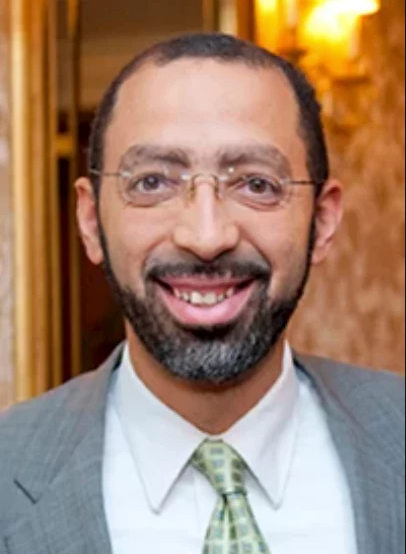Article
EU Panel Recommends Atezolizumab for Frontline PD-L1–High Metastatic NSCLC
Author(s):
The European Medicines Agency’s Committee for Medicinal Products for Human Use has recommended the approval of atezolizumab for use as a frontline treatment in adult patients with metastatic non–small cell lung cancer whose tumors have a high PD-L1 expression and no EGFR or ALK aberrations.
Levi Garraway, MD, PhD

The European Medicines Agency’s Committee for Medicinal Products for Human Use (CHMP) has recommended the approval of atezolizumab (Tecentriq) for use as a frontline treatment in adult patients with metastatic non–small cell lung cancer (NSCLC) whose tumors have a high PD-L1 expression and no EGFR or ALK aberrations.1
The recommendation was based on data from the phase 3 IMpower110 trial (NCT02409342), where single-agent atezolizumab led to a 7.1-month improvement in overall survival (OS) compared with chemotherapy, at 20.2 months vs 13.1 months, respectively (HR, 0.59; 95% CI, 0.40-0.89; P = .0106), in patients with a high PD-L1 expression.
“Today’s CHMP recommendation is a significant step forward in bringing a new chemotherapy-free treatment with flexible treatment schedules to people in Europe with certain types of lung cancer,” Levi Garraway, MD, PhD, chief medical officer and head of global product development at Roche, stated in a press release. “We remain committed to providing effective and tailored lung cancer treatment options, and this announcement is an important step toward this goal.”
The open-label phase 3 trial enrolled patients with metastatic nonsquamous or squamous NSCLC who did not previously receive chemotherapy and who had a PD-L1 expression of at least 1% of tumor cells or at least 1% of tumor-infiltrating immune cells.2
To be eligible for enrollment, patients had to be 18 years of age or older, have had stage IV nonsquamous or squamous NSCLC, measurable disease per RECIST v1.1 criteria, and a ECOG performance status of 0 or 1. Patients could not have received prior chemotherapy.
A total of 572 participants were randomized 1:1 to receive either intravenous (IV) atezolizumab at 1200 mg (n = 285) or 4 of 6 cycles of platinum-based chemotherapy once every 3 weeks (n = 287). Patients with nonsquamous disease who were assigned to the control arm, received either IV cisplatin at 75 mg/m2 or carboplatin at area under the curve (AUC) of 6 plus pemetrexed at 500 mg/m2. Patients with squamous disease assigned to the control arm were given IV cisplatin at 75 mg/m2 plus gemcitabine at 1250 mg/m2 or carboplatin at AUC of 5 plus gemcitabine at 100 mg/m2.
Stratification factors included sex (male vs female), performance status (0 vs 1), histology (nonsquamous vs squamous), and PD-L1 status (greater than 1% on tumor cells vs less than 1% on tumor cells).
The primary end point of the trial was OS in the PD-L1–selected population that excluded those whose tumors harbored EGFR mutations or ALK aberrations. Key secondary end points included progression-free survival (PFS) per investigator assessment and RECIST v1.1 criteria, duration of response (DOR), and OS and PFS per investigator assessment and RECIST v1.1 criteria in prespecified subgroups pertaining to PD-L1 status and blood-based tumor mutational burden.
Among all patients, the median age was 64.5 years, the majority were male and White. Additionally, 64.1% of patients had an ECOG performance status of 1, while 35.9% had a status of 0. Most patients, or 59%, were previous smokers, while 27.95% were current smokers and 13.0% were never smokers. Moreover, 69.5% had nonsquamous disease at the time of their diagnosis and 32.3% had squamous disease.
In the investigative arm, 166 had high or intermediate PD-L1 expression and 107 had high PD-L1 expression; in the control arm, 162 had high or intermediate PD-L1 expression and 98 had high PD-L1 expression.
Additional results indicated that 71.2% of patients with EGFR and ALK wild-type tumors who had high PD-L1 expression experienced progressive disease or died. In the investigative arm, the PFS was 8.1 months vs 5.0 months in the control arm (HR, 0.63; 95% CI, 0.45-0.88). Among those with high or intermediate PD-L1 expression, the PFS was 7.2 months vs 5.5 months with atezolizumab or chemotherapy, respectively (HR, 0.67; 95% CI, 0.52-0.88).
Among those with a high PD-L1 expression, 38.3% experienced an investigator-assessed confirmed response (CR) to treatment with atezolizumab vs 28.6% with chemotherapy. At the time of data cutoff, 68.3% of patients in the investigative arm continued to respond to treatment vs 35.7% of those in the control arm. Among those with high or intermediate PD-L1 expression, investigator-assessed CR was experienced by 30.7% and 32.1% of patients in the investigative and control arms, respectively; 70.6% and 34.6% of patients, respectively, experienced continued response.
Regarding safety, 90.2% of patients who received atezolizumab experienced adverse effects (AEs) vs 94.7% of those given chemotherapy; grade 3 or 4 toxicities were reported in 30.1% and 52.5% of patients, respectively. The most commonly reported grade 3 or 4 AEs included anemia, neutropenia, and thrombocytopenia; these were all reported in the control arm.
Serious AEs were reported in 28.3% of those on the atezolizumab arm vs 28.5% of those on the chemotherapy arm. Eleven patients on both arms experienced a grade 5 AE.
Immune-mediated AEs were reported in 40.2% of those on the investigative arm vs 16.7% of those on the control arm; these effects were grade 3 or 4. In 6.6% and 1.5% of patients, respectively. No grade 5 immune-mediated toxicities were observed. The most commonly reported effects included hepatic laboratory abnormalities, rash, and hypothyroidism.
Reference
- Roche receives positive CHMP opinion for Tecentriq as a first-line monotherapy treatment for people with a type of metastatic non-small cell lung cancer. News release. Roche. March 26, 2021. Accessed March 26, 2021. https://bit.ly/3tZPSdc
- Herbst RS, Giaccone G, de Marinis F, et al. Atezolzumab for first-line treatment of PD-L1–selected patients with NSCLC. N Engl J Med. 2020;383(14)13328-1339. doi:10.1056/NEJMoa1917346








